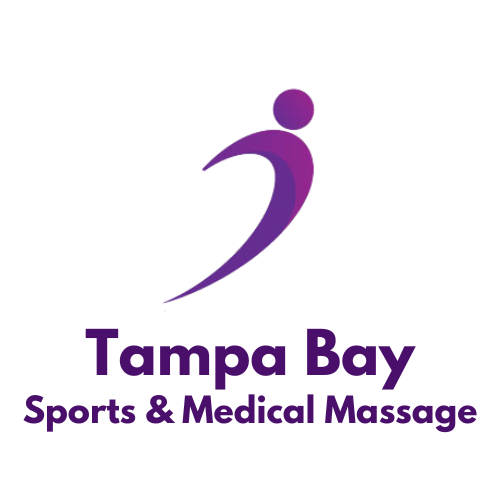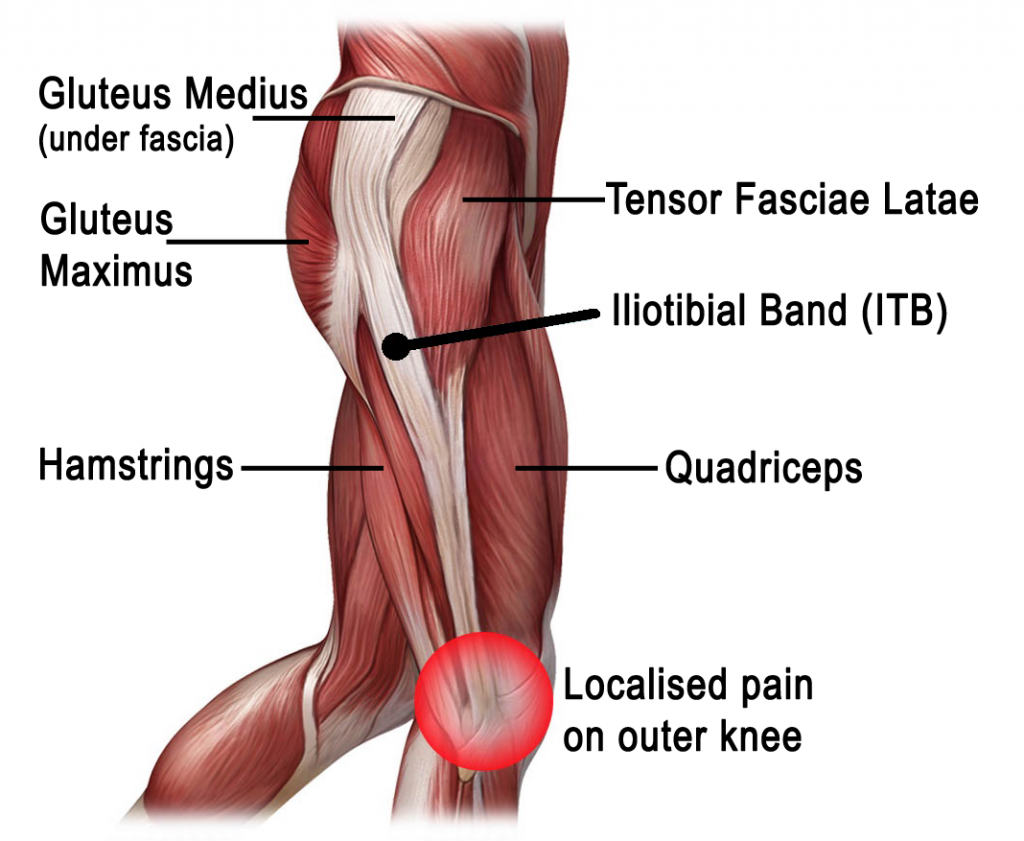What Works for Irritating IT Band Syndrome?
Running is great, but IT band syndrome – a common knee injury for runners – is not. Whether you’re a marathon runner or out for a casual jog, anyone is at risk for this kind of injury. Our massage therapists share the causes and symptoms of IT Band pain and ITBS treatments.
What is IT Band Syndrome?
The iliotibial (IT) band is a strong, thick band of fibrous tissue. It runs from the hip and goes down along the outer thigh, attaching on the outside edge of the shin bone just below the knee joint.
The band works with the quadriceps to provide stability to the outside of the knee joint during movement. Injury or irritation to the IT is called IT band syndrome and results in aching or sharp pain on the outside of the knee (though the thigh and/or hip may be affected as well).
Photo Credit: The Body Mechanic
IT band syndrome is most commonly seen in runners but can also affect other athletes:
Rowers
Cyclists
Soccer
field hockey
basketball players
Causes of ITBS
Several factors can make an athlete more vulnerable to developing IT band syndrome including:
Excessive training – when the IT band is irritated or inflamed due to overuse and stress
Poor training technique – running on only one side of a track or crowned road *Most roads slope off to the sides. Running along the edge causes the outside foot to be lower than the inside foot, causing the pelvis to tilt to one side and adding stress to the IT band.
Faulty biomechanics – excessive pronation of the foot, leg length discrepancy, lateral pelvic tilt, bowed legs
Muscle tightness or lack of flexibility – especially in the buttock, hips, and thigh muscles. Make sure to take time to stretch both before and after your workout! Here are some stretches for an at-home way to help with IT band pain.
Related >> Stages of Rehabilitation
IT Band Pain Symptoms
Irritation at the knee is typically the first sign of IT band syndrome, however, this discomfort can lead to an aching, burning pain felt on the outside of the knee, lower thigh, or hip.
Over time the pain may become constant and sharp or stabbing. As the pain becomes more severe, swelling over the outside of the knee may occur.
Other ITBS symptoms may include:
Inability to walk comfortably or bend the knee
Swelling or skin changes, i.e. discoloration, redness, or warmth
An injury or trauma that causes a deformity around the knee joint
Presence of a fever or other unusual symptoms
How is IT band Syndrome Treated?
Treating the pain from IT band syndrome generally includes a comprehensive approach. Depending on the severity of your case, treatment may include:
R.I.C.E. Protocol - This is an important part of the immediate and initial care of pain related to the iliotibial band.
RICE stands for...
Rest (time to take a break from running)
Ice (place ice packs on the outside of your knee for 15-minutes every two hours)
Compression (wrapping a bandage around your knee to stabilize the knee & reduce friction)
Elevation (keeping your knee above your heart while icing)
With RICE and rest you can begin to treat light IT Band pain.
Medication – There are several medications that can ease pain from IT pain syndrome, such as nonsteroidal anti-inflammatories (NSAIDs), ibuprofen or Aleve, and topical treatments. Your doctor may recommend a steroid injection to help with your pain.
Massage or Physical Therapy – Once the initial IT band inflammation and pain subsides, some form of therapy is the next step to healing. At Tampa Bay Sports & Medical Massage, our highly trained therapists will utilize different techniques to improve leg strength, mobility, and flexibility.
We work to correct any biomechanical errors and focus on building muscle strength and flexibility. Click here to learn more about how we treat IT band syndrome.
Related >> Pain Management: Hot vs. Cold Therapy
Treat Your IT Band Pain
Fortunately, IT band syndrome can be treated with simple measures including reduced activity, mild medications, and massage. Of course, it is essential to address underlying problems to prevent a recurrence of ITBS. Regular massage therapy, as well as strength and flexibility exercises, can help correct faulty biomechanics or tight muscles.
Schedule a sports massage to be proactive with your recovery and keep IT Band pain at bay! Call Tampa Bay Sports & Medical Massage today at (813) 667-0988 to book an appointment with our top-rated South Tampa massage therapists.

